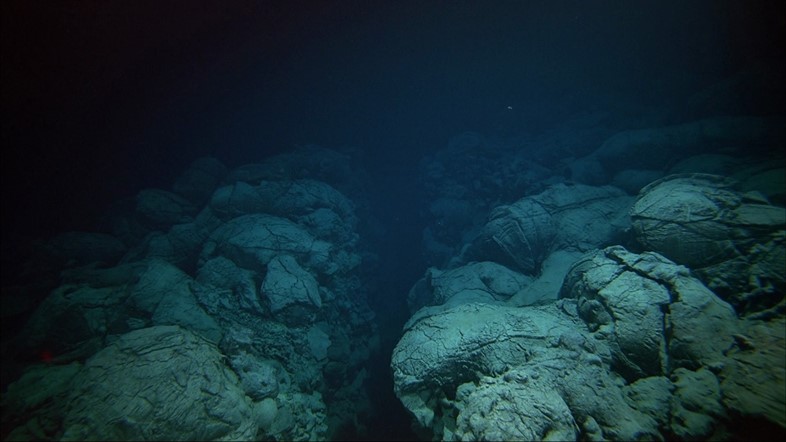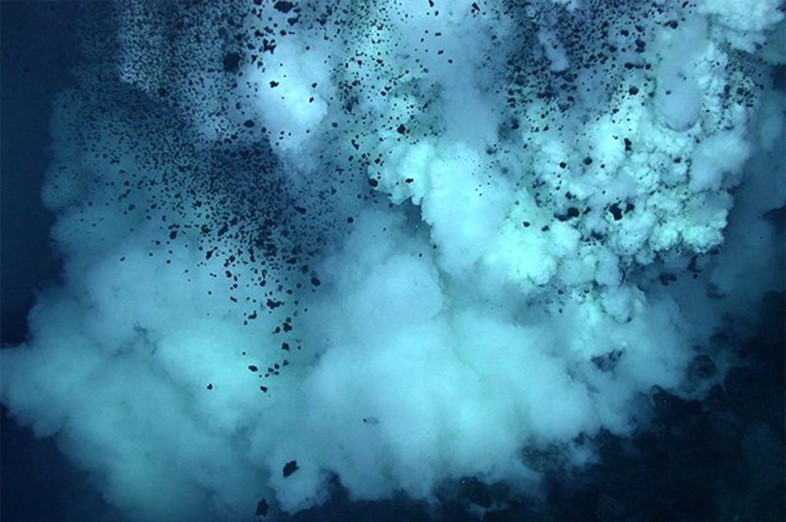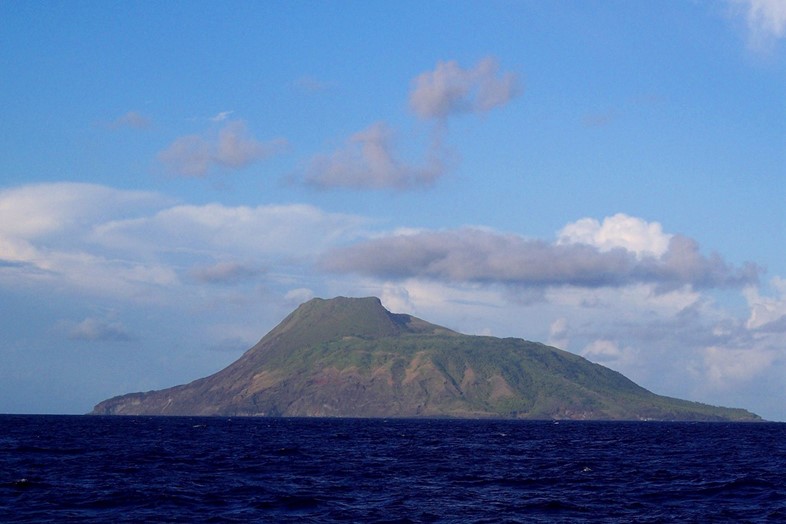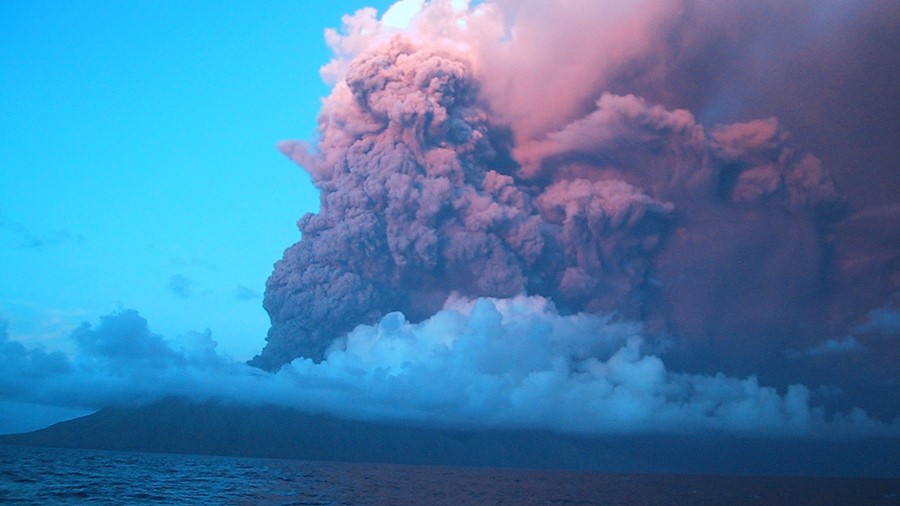super/collider explores the remote Mariana Islands: a lush, crescent-shaped archipelago with a flurry of bubbling hydrothermal activity beneath its calm surface
Where on Earth?
Mariana Islands
GPS Coordinates: 16°37′N 145°37′E
In our last column, we looked at the deepest point in the world’s oceans: Challenger Deep. Now, we shift just a little to the West and trace a series of undersea volcanos as they rise to the surface and emerge to form the Mariana Islands. More than just a series of lush tropical paradises, these remote specks of land have revealed important clues about both humankind’s early migrations and the complex and volatile undersea geology of the western Pacific.
Let’s start by diving back down under the ocean for a minute and plunging into the Mariana Trench. Located off the eastern side of the Marianas, this vast underwater canyon curves around in an arc, stretching over 1500 miles from north to south. It’s formed by the subduction of the Pacific tectonic plate under the Mariana plate – like two carpet edges meeting and one being pushed under the other.

This tectonic action created the ultra-deep trench and is also driving the area’s ongoing volcanic activity, which forms a scythe-shaped string of volcanoes stretching up to meet Japan. Part of the larger Izu-Bonin-Mariana Arc, this geological system is home to the most volcanically active convergent plate boundary on Earth – with trapped water being pushed under the grinding plates to drive hydrothermal activity. One site produces liquid sulphur and another almost pure liquid carbon dioxide, one of only two places on the planet this is known to occur. In other areas, scalding acidic water spews forth, giving scientists a glimpse at what may happen when acidification threatens other areas.

What on Earth?
Above the waves, the hellish scene is replaced by one of pure heaven. Covered in lush, untouched forests, blessed with abundant freshwater and surrounded by reefs and rich fishing grounds, the Marianas made ideal – if distant – outposts for early travellers. Archeological research on the island of Tinian reveals that people first arrived around 3500 years ago, making it the first place humans reached in Oceania. At the time, the more-than two thousand kilometre voyage from the nearest landmass meant these ancient explorers had to make the longest ocean crossing in human history. Their eventual ancestors carved immense megalithic ‘taga stones’ to support important buildings, some of which can still be seen standing.

Today, many of the remote Northern islands are once again uninhabited, covered in tropical rainforest and fringed with untouched reefs – partially due to their isolation. Zooming in with Google maps, it’s hard to even find these tiny specks, adrift in an otherwise endless ocean. While Saipan and Guam are heavily developed and the latter home to a large US airbase, the more remote islands are surrounded by the Marianas Trench Marine National Monument. Set aside in 2009, it covers 95,216 square miles within and adjacent to the Mariana Archipelago – including three areas of undersea mud volcanoes, more than a thousand miles of the Mariana Trench, and the waters and submerged lands around some of the northern Mariana Islands. Beneath the surface, much of it has yet to be explored.

How on Earth?
Guam and Saipan (plus next-door Tinian) are easily reached by air, but things get trickier thereafter. As the Northern Islands semi-official website explains: “Today there are only small settlements on Agrigan and Pagan. The islands are seldom visited, except by scientists and CNMI Emergency Management Office officials, who monitor the activity of the volcanoes. What is there to do in The Northern Islands? Hiking, fishing, snorkelling, hunting, bird watching, volcano watching, photography and camping are just a few suggestions. You won't find any hotels or restaurants just yet, so you'll need to bring your own food, fresh drinking water and camping supplies if you're staying overnight.” For more information, head here.
